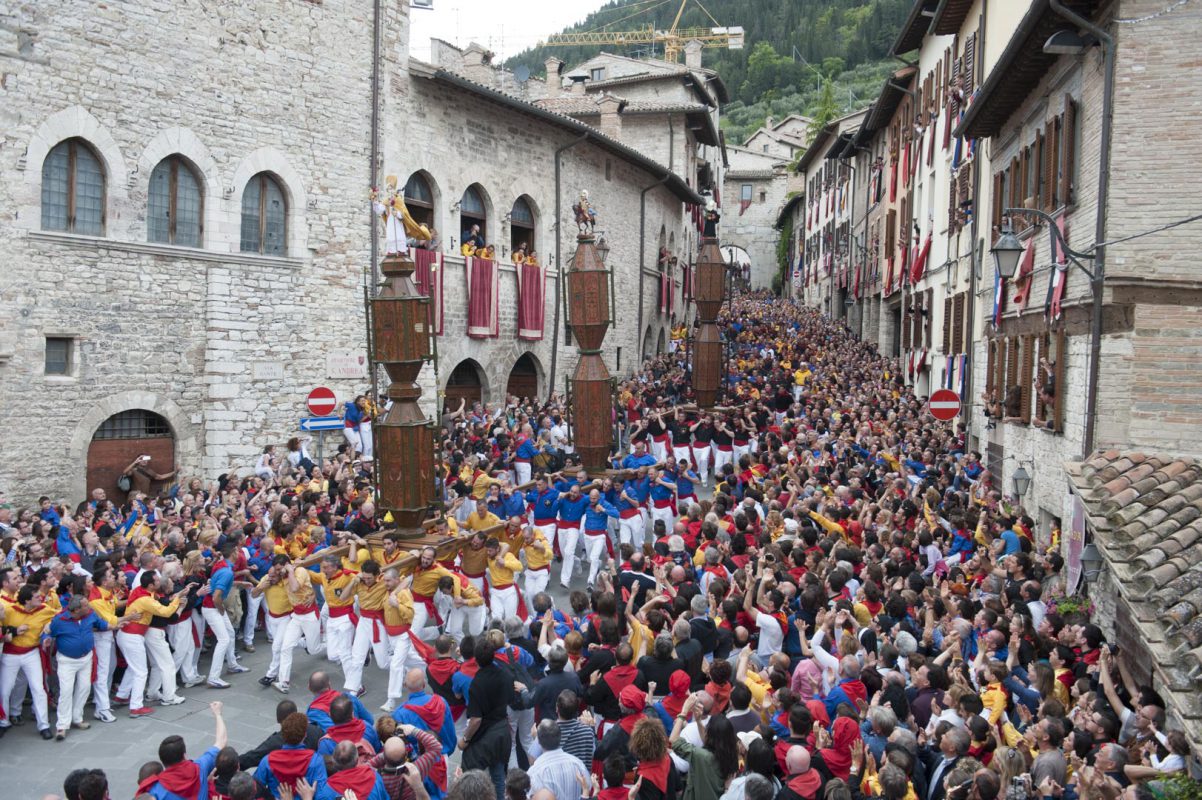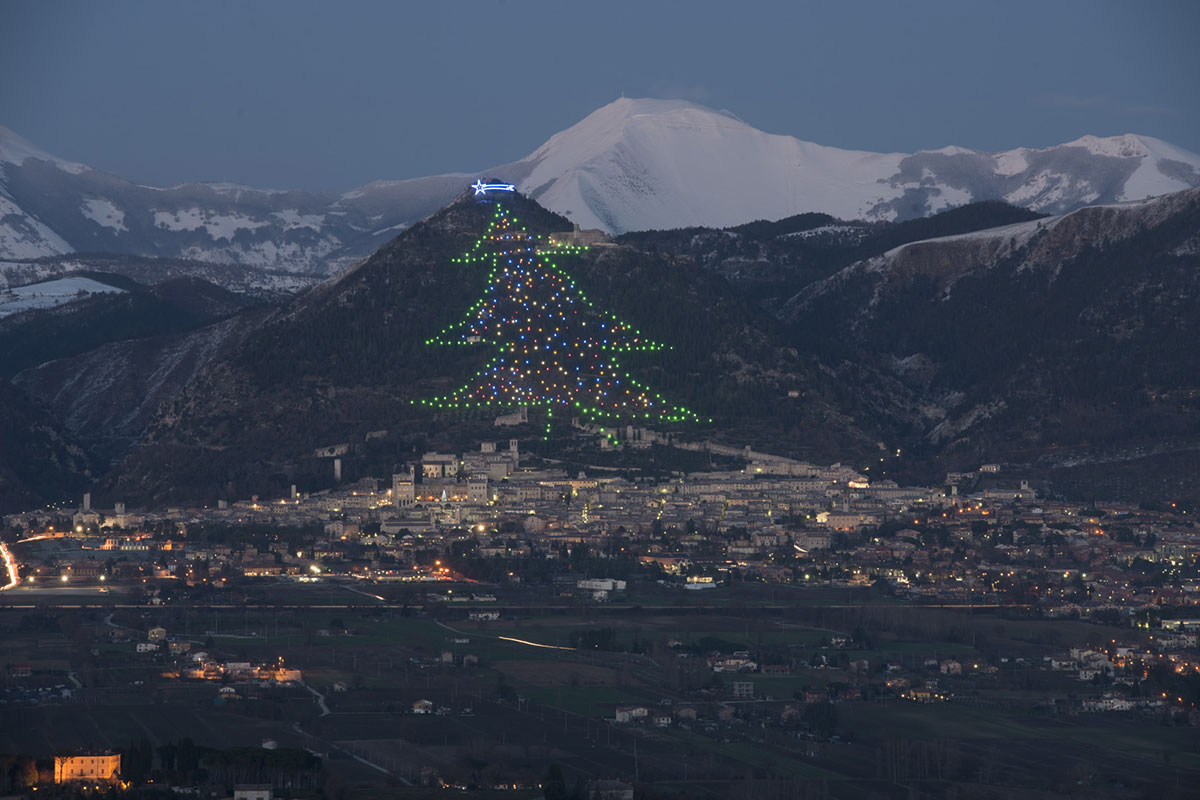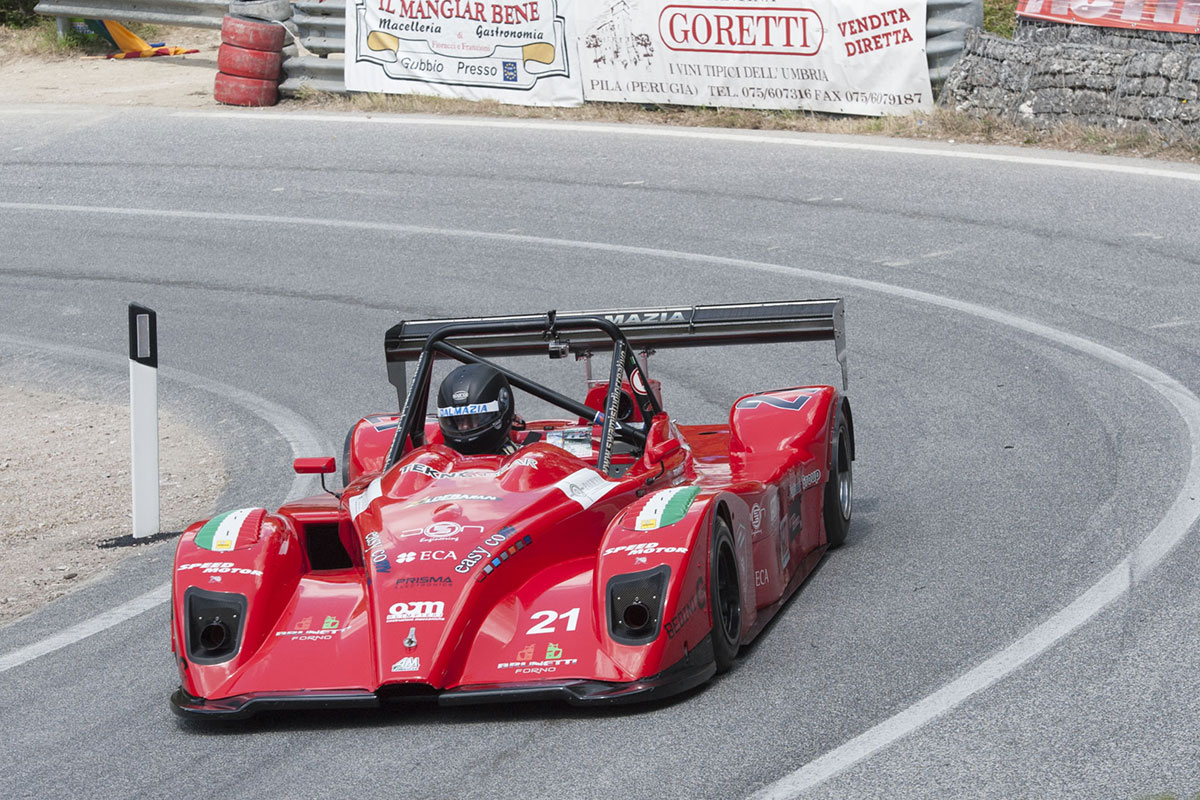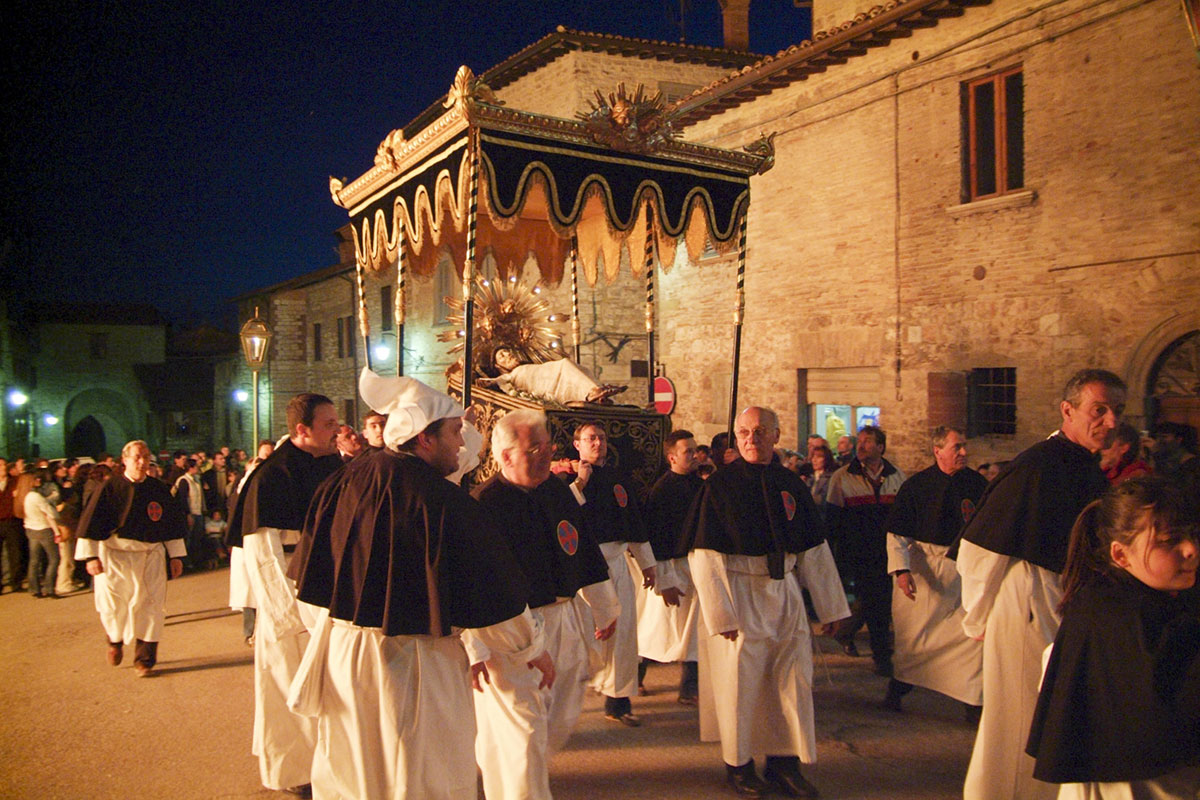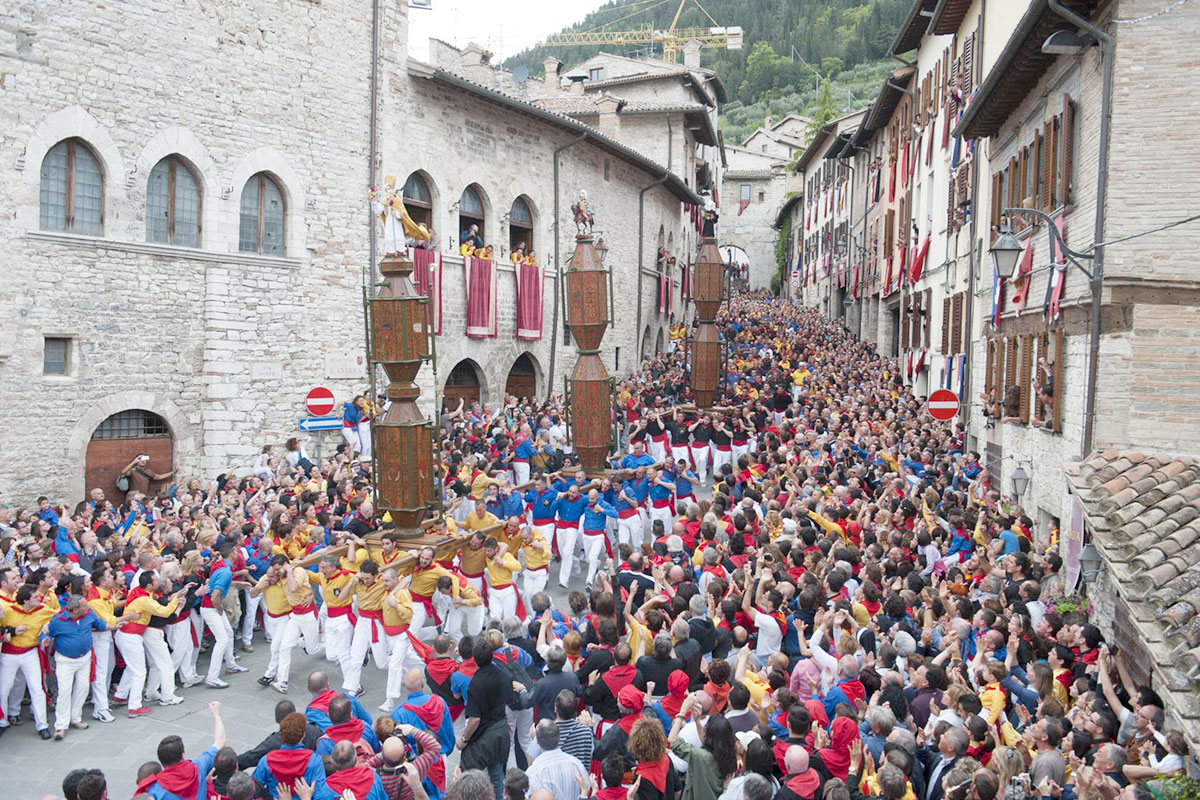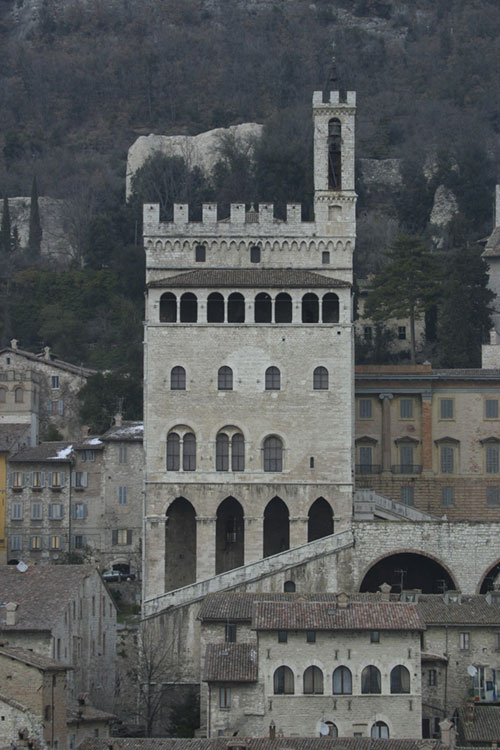
Gubbio
Considered by scholars and researchers to be the most beautiful medieval city in Umbria and in the whole world.
History
Gubbio is located in the north-eastern part of Umbria on the slopes of Mount Ingino. The Basilica of Sant’Ubaldo dominates from above, and houses the incorrupt remains of the patron saint (b.1085-d.1160);
Gubbio was founded by the ancient Umbrians and was called Ikuvium or Iguvium, as evidenced by the famous Eugubine Tablets (I-III century BC), seven bronze tables written in the Umbrian language on the “front and back”. These tablets represent the most important document of pre-Roman Italy to date and describe with detail and precision a flourishing culture and economy with an intense religious life of this important Italian center. Currently the seven tables are visible at the Palazzo dei Consoli, today the Civic Museum. Under Roman rule the city was first called Iguvium and then Eugubium and became an important Roman municipality. In 552 A.d. it was destroyed by the Goths of Totila. The Byzantines took over in 592 A.d and then the Longobards in 772 A.d.
In the eleventh century Gubbio became a free municipality and in the twelfth century, with the spiritual guidance of Bishop Ubaldo, Gubbio won the famous war against Perugia which was allied with 10 other enemy cities. From 1384 it was included in the Duchy of Urbino and with this passed to the Church in 1631.
It reached its maximum splendor in the XIV / XV centuries, a period in which, thanks to its flourishing manufacturing activity, was enriched with monuments and assumed the characteristic medieval structure that still characterizes it today, Gubbio became famous for its ceramics and the glazed majolica by Mastro Giorgio Andreoli of the sixteenth century is now famous throughout the world.
Gubbio is considered by scholars and researchers to be the most beautiful medieval city of Umbria and the entire world due to the architectural conservation of its monuments that testify to its glorious and ancient past. The Roman theater, located just outside the city walls, once held about 15,000 spectators and today still testifies to the importance Gubbio held as a Roman municipality.
Divina Commedia
“Intra Tupino e l’acqua che discende del colle eletto dal beato Ubaldo, fertile costa d’alto monte pende”… (Paradiso Canto XI – Divina Commedia – Dante)
The beauties of Gubbio
Art and architecture
Gubbio is host to many architectural masterpieces that symbolize and recall the power of this medieval city-state.
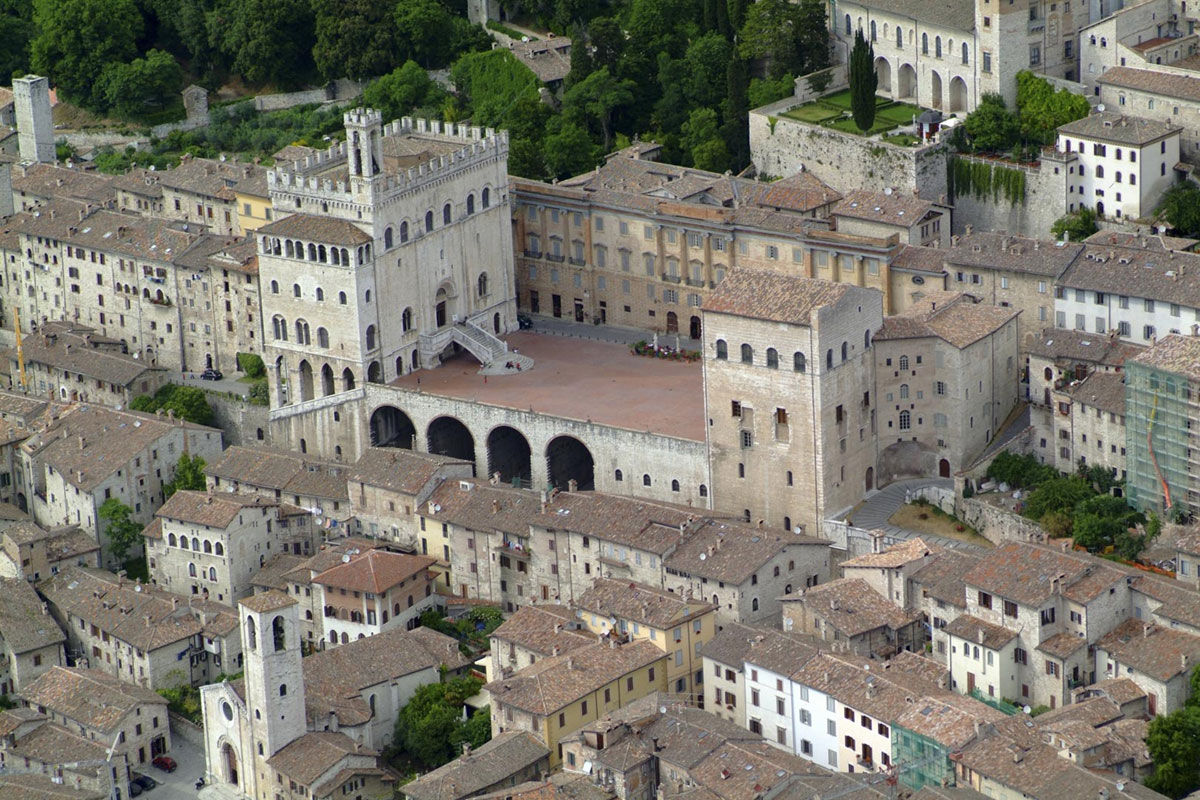
At the beginning of the XIV century the Palazzo dei Consoli, Palazzo Praetorian, and the hanging square were built in base of the city planning. These became the symbols of the city and were built in such a way as to touch all four city districts. Other sites of notable interest include the Palazzo del Capitano and the Palazzo del Bargello, the ancient municipal police building with its famous fountain of madmen (fontana dei matti) where can run around it three times and being splashed with water from the fountain one can obtain the “certificate” of honorary madman of city.
The renaissance outline of the Ducal Palace is attributed to the famous Sienese architect Francesco di Giorgio Martini and testifies to the wealthy period living under the rule of the Duke Federico da Montefeltro.
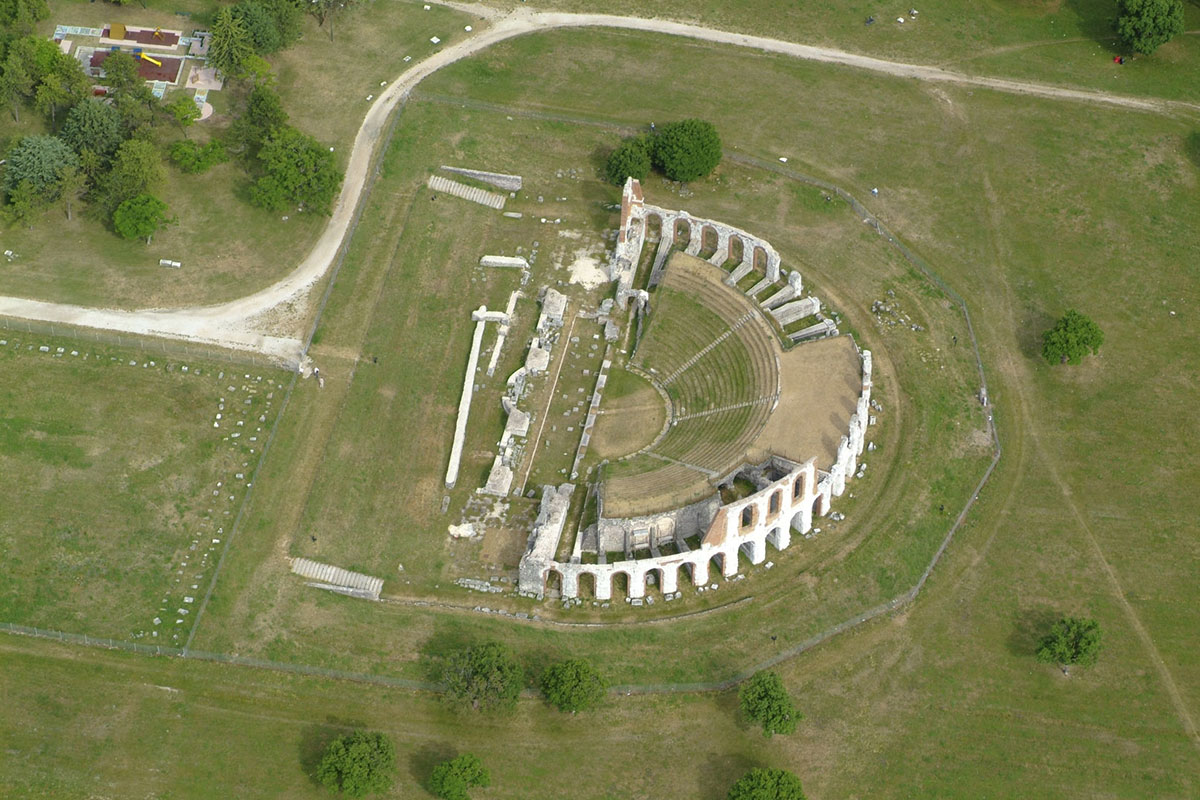
The churches of the city are as beautiful as they are important: the Cathedral (XII century), Santa Maria Nuova, which houses the extraordinary fresco Madonna del Belvedere by Ottaviano Nelli (1413) , Saint Agustine Church and Convent (XIII century) also house exquisite frescos my Nelli, the Basilica and Convent of Saint Francis in Piazza 40 Martiri was built on the site of the Spadalonga family which hosted and dressed Saint Francis when he left Assisi and renounced all material goods. It was here that Francis received the tunic that would be adopted by the followers of the order, the Church of San Giovanni (Saint John’s) which is characterized by the Romanesque façade and bell tower. Other noteworthy churches to add to the list include San Pietro (Saint Peter’s), San Domenico and the church of Sant’Andrea or the Monastery of San Marziale.
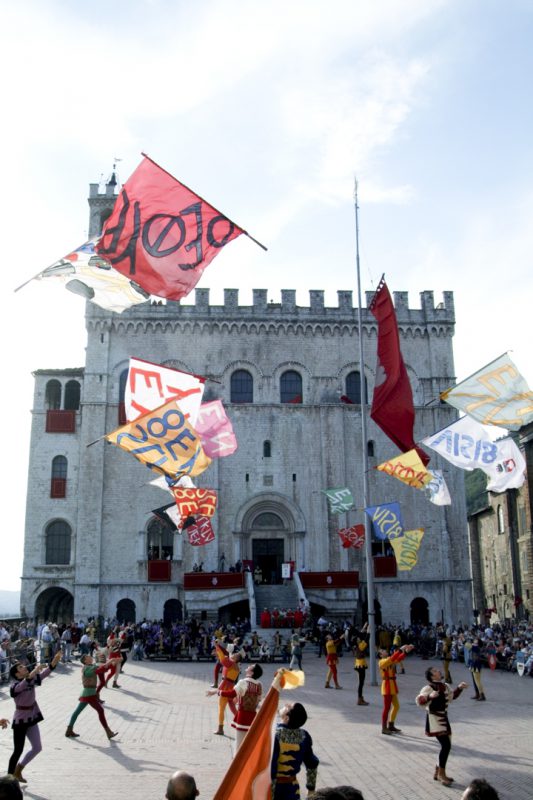
Piazza di 40 Martiri is a remarkable square with the Church and Ospedale dei Bianchi and the Loggia dei Tiratori della Lana. The long building with its arcade is adjacent to the Church of Santa Maria dei Laici, originally St. Mary’s Hospital, erected in 1326. The Woolworkers’ Guild wanted build, above the hospital, a covered area where pieces of wool cloth could be stretched and let to dry.
On the outskirts of the city, beyond the ancient walls, we can find the Roman mausoleum of Pomponio Grecino, the Church of San Secondo, the Church of the Madonna del Prato and the Church of the Vittorina, where tradition has it that the famous meeting between St. Francis and infamous wolf of Gubbio took place. This episode is narrated in chapter XXI of the famous “Fioretti” of St. Francis.
Of great naturalistic interest, in addition to the nature park of Monte Cucco with its peak of 1566 m. above sea level, is the Bottaccione Gorge with rocks that, according to theory, conceal the secrets of the extinction of the dinosaurs that occurred 65 million years ago; these rock formations contain traces of iridium, a metal that is not of this world but is found in meteorites.
A few of the world-renowned annual events in Gubbio are the famous Festa dei Ceri (May 15), the Procession of the Dead Christ (held on Good Friday), the Palio of the Crossbow and the Largest Christmas Tree in the World on the slopes of Mount Ingino.
As you can see, Gubbio has much to offer. Come and see for yourself, Come to Gubbio and Umbria, where some of the most ancient people give a most modern welcome!
Visit the official site of Gubbi:Exhibitions and events

 Italiano
Italiano
